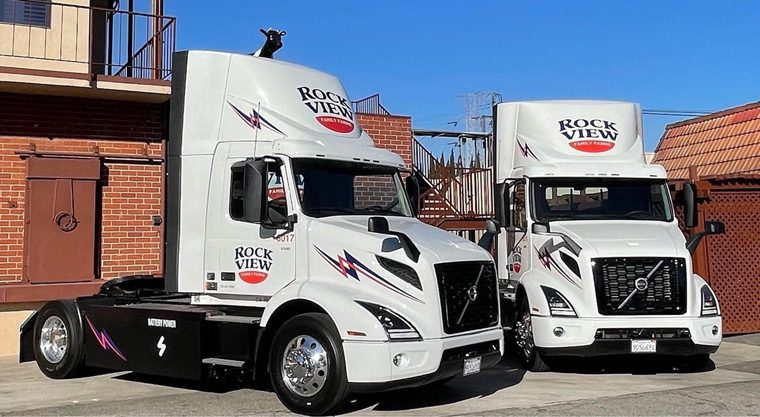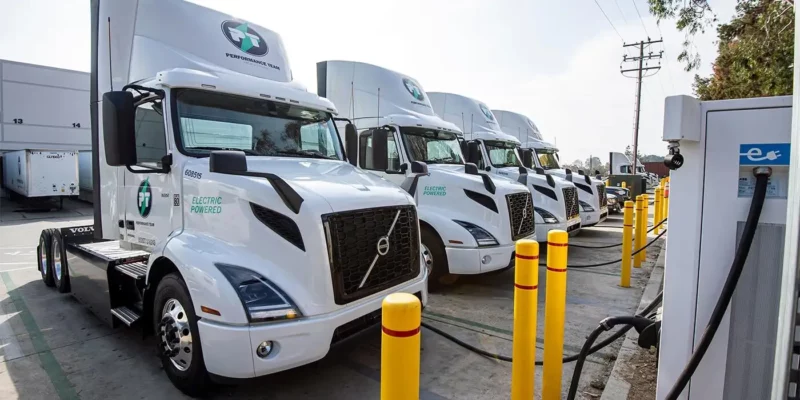News & Media

On-Site Solar + Storage Improves Total Cost of Ownership for Fleet Electrification
As fleets evaluate opportunities to transition to battery-electric vehicles (BEVs), securing a stable and cost-effective power supply is important for their business. Many fleets are turning to on-site solar and energy storage systems as a solution to curb electricity costs from the utility grid that can peak when demand is high.
On-site energy storage can reduce a fleet’s total cost of electrification.
If a fleet is billed on a time-of-use (TOU) rate by its utility, using on-site energy storage can reduce its electricity costs. When electricity costs are low (during periods of low demand), the energy storage device is charged. Then, when electricity costs peak (during periods of high demand), a fleet can charge its vehicles using the stored energy and not be subject to demand charges. This practice of avoiding the use of grid power during peak periods is known as “peak shaving,” and benefits both utilities and fleets by reducing the total demand on the grid.
Recycling vehicle batteries as stationary storage devices, and pairing them with solar power systems, can achieve deeper savings in the long term.
At today’s prices, the battery in a heavy-duty vehicle is the single most expensive component of the total vehicle cost. These high-cost batteries are replaced once they can no longer retain at least 80% of their total usable capacity and when their self-discharge rate exceeds 5% per 24-hour period. This standard was introduced to help guarantee vehicle performance and range, but has a major impact on a BEV’s total cost of ownership.
Repurposing BEV batteries as stationary storage solutions allows BEV fleet owners to maximize their investment while reducing their energy costs.
Pairing them with solar power generation systems can further deepen long-term cost savings. This configuration, termed “solar plus storage” (“solar + storage”), uses solar panels to generate carbon-free energy which is subsequently stored in a storage device (typically a battery) for use as-needed. Configuration sizes vary and can serve smaller private fleets, as well as large utility-scale needs.
Solar + Storage mitigates a fleet’s exposure to grid instability, improving operational reliability.
Beyond cost savings, on-site energy storage systems reduce an electric fleet’s risk by limiting their exposure to grid outages. This resiliency measure is often critical for commercial fleet operators, as vehicle downtime can have major business repercussions.
As grid-independent energy resources, solar + storage systems enhance resiliency by filling a power supply gap for an indefinite time period. This strategy is particularly important in states like
California, where utilities have the ability to enact a public safety grid power shut-off to reduce the risk of overloaded powerlines causing wildfires.
For commercial entities seeking to reduce their carbon footprint, solar + storage provides a solution that is not attainable with batteries alone.
On-site solar systems can help fleets further their emission reductions and maximize sustainability. The carbon intensity of energy captured by storage devices that are charged by the electric grid can only be as low as the grid’s fuel mix. Solar systems provide truly zero-carbon electricity when the sun is shining, which is generally when commercial fleet vehicles are in operation.
Pairing an energy storage device, such as a second-life battery, with a solar system enables a fleet to access carbon-free power at any time of day or night.
This pairing is most attractive for fleets with reliable sun exposure and competitive solar system project costs relative to their peak electricity prices and/or demand charges. It may also be a cost-effective option for fleets that are able to connect their solar systems to the electric grid and sell excess power back to their utility.
There are many factors to consider when deciding if solar + storage is a good fit for your fleet. Solar exposure, utility prices and interconnection policies, total project costs, fleet charging needs, and emissions reduction goals are important considerations. Recycling BEV batteries as on-site storage units – with or without a solar system – may provide critical cost savings and ensure a project achieves the total cost of ownership required for long-term success.


